Project
Addo National Park Experience
Twelve learners from Victoria Girls High School went on a day trip to Addo National Park. Using their experiences from the event, the learners researched and created a series of educational resources, shown below: 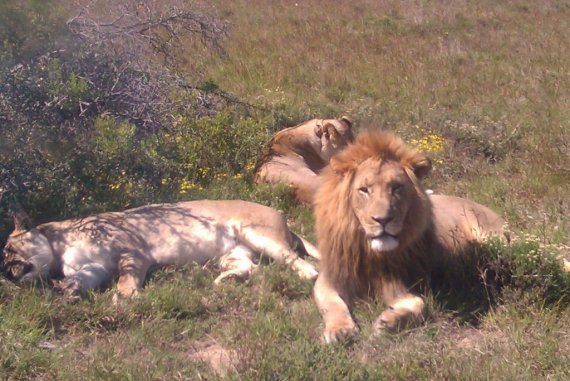
In many of the futuristic Science Fiction films that are around today it is shown that the way humans traveled through space for months on end is that they fell into a deep sleep and don't wake up until the journey was over. As seemingly impossible as that sounds, its not. Have you ever noticed that bears manage just fine to hibernate all through the three months of winter every year! They do this by radically slowing down their heart rate. this means that they use less energy and so don't require food or water, and they need less oxygen.
Now, one of the reasons humans have never been able to fly past the moon in space is that our spaceships are unable to carry a sufficient supply of food, water and oxygen needed for humans on board. But if we could learn to hibernate like bears we would need minimal oxygen, and food and water only for when the astronauts are awake.
I think that this form of deep, hibernation sleep can be created in a few different ways. We could, like the bears, train our bodies to slow down our heart rates and fall into a deep sleep at will and then awake when there is a significant increase in temperature. This would from part of a standard astronaut training. We could also create a gas or pill that would induce the sleep and we would wake up after the effects of the drug wear off.
I think that this system is the future of space travel, and the only way humans will ever be able to move to another planet or have human planetary explorers, that are able to go further than the moon. And who knows if space hibernation is perfected we could be the aliens visiting other planets all over the Universe, and becoming legends carved on cave walls by the life forms that live there!
[more]
Biomimicry is when people look at nature and see how
we can copy it to improve the lives of humans. Some scientists in Florida, USA,
working for Sharklet Technologies, noticed that sharks never
have any parasites stuck to their skin like whales do. They found this to be because
of the texture of shark skin. Even though shark skin seems to be smooth, it
actually has tiny rough, ridged plates that overlap that can only be seen when
highly magnified. This texture inhibits the growth of organisms on their skin
because the organisms cannot attach themselves to the skin and therefore cannot
breed. 
The
rough texture of shark skin seen on a highly magnified scale
This idea could be copied and used in the shipping
industry. A metal could be made to have
a similar texture to shark skin. This metal could be used to build ships.
Organisms would then not be able to stick to ships and be transported to other
parts of the world where they are not indigenous, stopping the spread of alien
organisms that might compete with the indigenous ones and disrupt the natural
ecosystems.
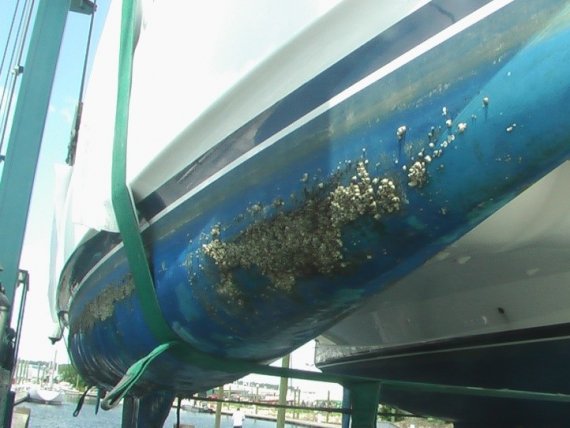
The
hull of a ship covered in organisms- this could be prevented
[more]
Hurricane resistant
houses
There is
at least one hurricane every year that damages hundreds of houses and buildings
in different parts of the world. One of the main problems is the strong wind
which rips off roofs and knocks down walls. Strong rain can build up on roofs
quickly, causing them to collapse and foundations are undermined. Houses
called “Topsiders” have been designed to withstand strong winds. They are built
on stilts with a post and beam building system, this allows wind to blow
underneath them. There can still be some uplift from winds and stilts can be
undermined by water. 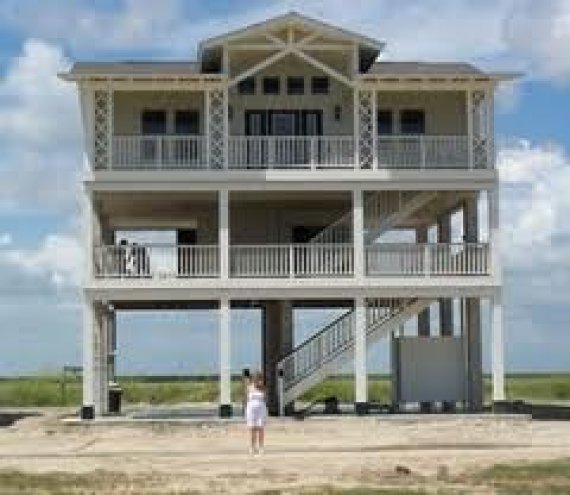
Ants and
termites build dome-shaped mounds that allow excess rain to run off easily and
stops them from being affected by wind. We could
copy this dome shape and build houses that are hurricane resistant. A
gradually sloping dome shape would easily allow wind to blow over it without
causing any damage. The round sloping shape will not allow any water to build
up on it. Sealed windows could be installed to stop water from getting in
during hurricanes and storms. The dome building could be made from strong metal
that cannot rust, to make it very water resistant. Grass or other plants that
absorbed a lot of water quickly can be planted over the dome to quickly absorb
flood water. Another advantage of this is that it provides green spaces for
children to play.
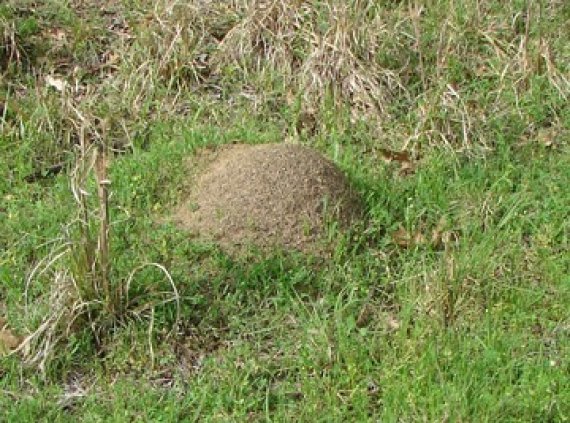 Ant Mounds Ant Mounds 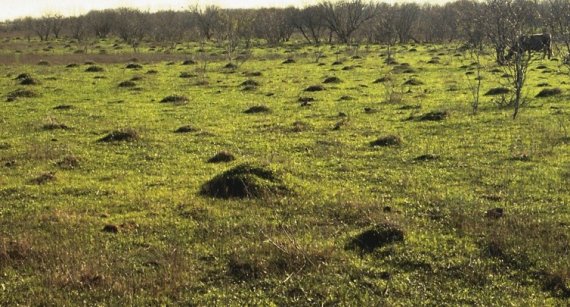
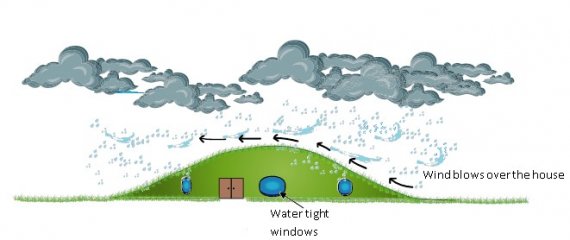 Out side view of house Out side view of house
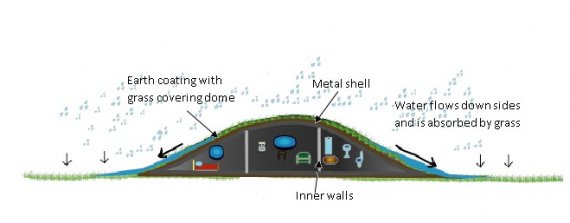
Cross section of house
[more]
I will be describing how a lion looks like. First I'll be describing the male lion afterwards then the general features of a lion and then the looks of a female lion. I'll also describe the lion cubs and I'll be informing you a little about the lions' habits. The male lion is bivery big. It has a huge fluffy mane that goes around its face and neck. A lion is like a giant cat. It has a flat face with a flat nose , whiskers and round golden eyes and they are round.The ears on the side of its head are not very big, thet're about the size of a baby's fist. When a lion walks the muscular shoulder blades come up. All lions are short. their height is about the same as a maa couch. A lion's fur is thin and smooth Their mane is fluffy.the fluffiness is the texture of the mane. The shape of a lion's mane is like a ragged water droplet, A water droplet is round at the top and pointy at the bottom. The female lion is cakked a lioness, it does not have a mane, It's smaller than the male lion. Lion cubs, male and female are born without manes. They are the size of a 2 months old human baby. They have tiny paws, almost the size of a human baby's foot. A cub's teeth are sharp yet harmless. The adult lion's paws have claws that are pointy, sharp and dangerous. The female's teeth are sharper because they do the hunting, whilr the male lon babysit's the cubs. Lions stay together, A group o flion' sis called a prode of lions. A lion could easily blend in a savanna region because of its colour. It is a beigish golden colour. Lions are carnivores, meaning that the eat other animals such as a zebra.
[more]
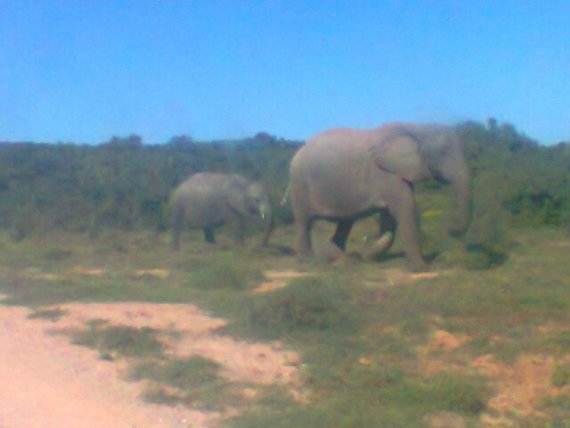
Elephant
Olifant
Indlovu

Lion
Leeu
Ingonyama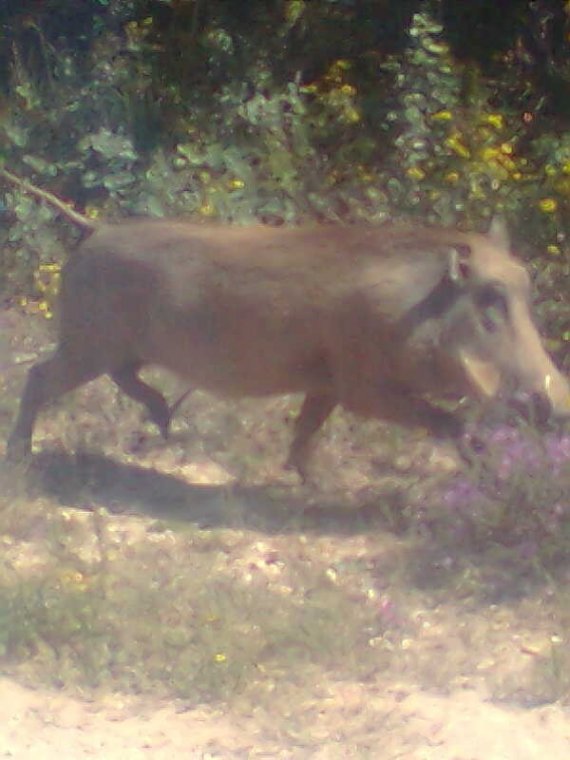
Warthog
Ingulube
Vlakvark
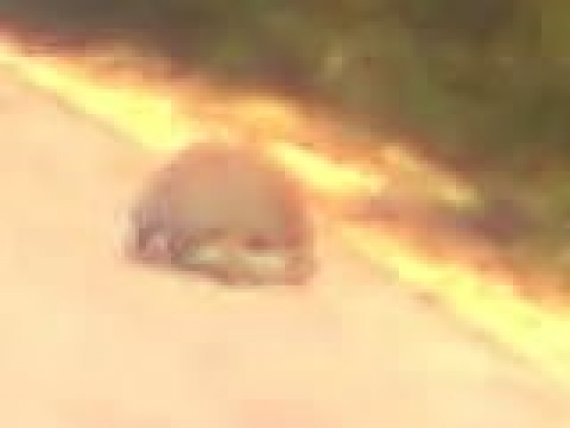
Tortoise
Ufudo
Skilpad
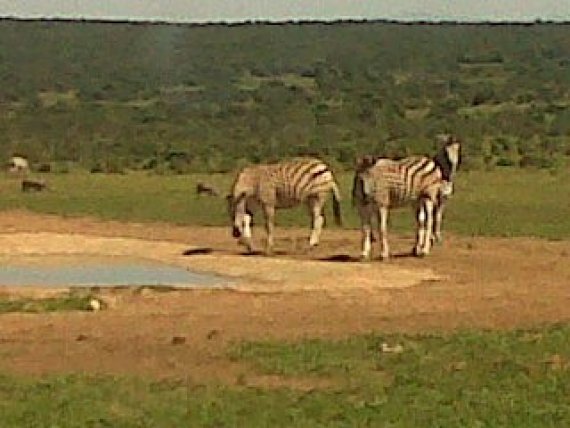
Zebra Sebra Iqwarhashe
[more]
 After register period we all met at the bubble ,most of us were exicited cause we got to miss school ,but we didn't know what was in store for us SCHOOL AT THE ADDO!Before we even got there we bumped into a few animals ;a zebra ,monkey and the red-harte best.we got there and read a few boards telling us about the different animals ,saw a lot of creative things like the display of different horns and head skeletons of various animals then we finally began our tour,i must say it was very hot as a result i had a headache and couldn't keep my head up.We had a bet on who is going to spot the elephant first and that was Meagan ,she was then awarded with R20 by ms Hayes.The elephant was huge one would expect to hear them thump when they step but thats not the case ,they are so quiet and just dont get in thier way.They eat most of the Vegitation at the ADDO ,they spend most of their time eating or thinking where they could get food.We were lucky enough to see a lion and not just one but 3!WE SAW LIONS!!!!it must say it was my first time and im sure for others too.We came across the spek boom we were told that it supports most of the elephant population, it is high in nutriants and carbon.there were lovely flowers like the namakwa daisies and we saw fynbos that we were told it comes in 3 types restiods,ericoids and proteoids.We also came across the black backed jackal,eland,egytpian goose and the plover (naming a few).unfortuantely we didn't see any black rhino's and we concluded they were probably hiding due to many being victimised for thier horns .Poaching is wrong because when you take an animals tusks you make vunerable and therefore making it difficult for it to survive. It was a great day thanks to ms.mcCrindle ,ms Hayes and ms. Retief for the nice biscuits and the files and pen and thank After register period we all met at the bubble ,most of us were exicited cause we got to miss school ,but we didn't know what was in store for us SCHOOL AT THE ADDO!Before we even got there we bumped into a few animals ;a zebra ,monkey and the red-harte best.we got there and read a few boards telling us about the different animals ,saw a lot of creative things like the display of different horns and head skeletons of various animals then we finally began our tour,i must say it was very hot as a result i had a headache and couldn't keep my head up.We had a bet on who is going to spot the elephant first and that was Meagan ,she was then awarded with R20 by ms Hayes.The elephant was huge one would expect to hear them thump when they step but thats not the case ,they are so quiet and just dont get in thier way.They eat most of the Vegitation at the ADDO ,they spend most of their time eating or thinking where they could get food.We were lucky enough to see a lion and not just one but 3!WE SAW LIONS!!!!it must say it was my first time and im sure for others too.We came across the spek boom we were told that it supports most of the elephant population, it is high in nutriants and carbon.there were lovely flowers like the namakwa daisies and we saw fynbos that we were told it comes in 3 types restiods,ericoids and proteoids.We also came across the black backed jackal,eland,egytpian goose and the plover (naming a few).unfortuantely we didn't see any black rhino's and we concluded they were probably hiding due to many being victimised for thier horns .Poaching is wrong because when you take an animals tusks you make vunerable and therefore making it difficult for it to survive. It was a great day thanks to ms.mcCrindle ,ms Hayes and ms. Retief for the nice biscuits and the files and pen and thank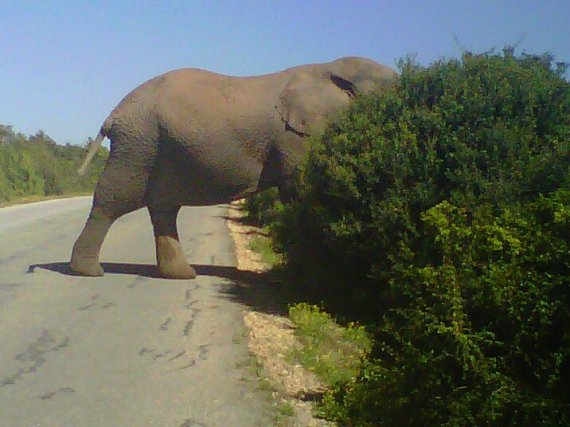 to ms. Czeredreck to ms. Czeredreck
[more]
At first I wasn't really fascinated by this whole Addo thing. I was just going for the sake of going, but as the day went by I realised that this trip was very useful to some of use who didn't know that much about nature and its surroundings.
When I got into the bus I was like YIPPIE this is my que toleep now, but Ms Hayes told us that we had tom keep our eyes open to spot animals before we reach our destination (Addo)
When we were about to reach Addo Ms Hayes said that she would give out a R20 prize to the first person who would spot an eleplhant since the Addo was basisally based on Elephants. everyone's eyes were now open.we drove and drove but there were no signs of any elephants around us. Some of us decided to give up on the spotting of an elephant because there were just now elephants on the way.
We got to the nain gate but still there were no signs of any elephants. At the gate we were welcomed by two ladies who gave us free newspapers and a book about the Addo.
[more]
The Thorny Devil For those of you that don't know, the thorny devil lizard is perhaps one of the strangest looking lizards today. It is a small, desert lizard that makes its home in Australia.
Now, one of this odd little reptile's fantastic adaptions to desert life, is how it can drink water. If you were to place a very thirsty thorny devil next to a dish containing water, all it would have to do would to place a single foot in the liquid. If you looked closely, you would notice that it gulped as if drinking, and that the water in the dish was slowly depleting. Confused? Well, some might think that it was actually absorbing the water through its foot. Incorrect. The water actually, miraculous as though it may seem, would be travelling up its leg, over its body, to its mouth. Still perplexed? As any normal person would be! It is common knowledge that water does not run uphill! However, if you were to look very closely at the skin of this reptile, you would notice a complex system of tiny grooves, or more appropriately in this case, channels that run between the scales. All of these miniscule channels run straight to the corner of the thorny devil's mouth. These channels absorb water using an interesting process, called capillary action (yes, it sounds like the tiny blood systems in the human body. Can you see where this is going . . . ?). Another excellent example of capillary action would be when you put an extremely thin straw into water, you notice some of the water will begin to rise in the straw above water level. As an added bonus, when travelling through the desert vegetation, this lizard can actually drink dew drops as it passes by, using the capillary action grooves. It's all very good marvelling at this creature, and rightly so, but the real reason for excitement is that this method involves the gathering of water! And water - as we know, despite making up the majority of the Earth's surface as well as our bodies - is quickly becoming very scarce. Think about it: a method of "harvesting" water . . . Let's start simple when implementing this new method. First, what is a good example of a large, previously unused body of water, hard to collect? Well. Fog certainly comes to mind. We could use the structure of the lizard's skin as an example, and create vessels covered with the same pattern of grooves. Then, during those foggy days, one could simpy place this object outside and wait patiently. Similarly, we could use it in the desert, like its inspiration. At night, the desert becomes very cool, and water condensation occurs. These vessels or objects could collect the newly formed drops of water efficiently and effectively. These ideas may not appear extremely revolutionary, but consider the water collecting prospects, the room for improvement, and of course the fact that the process requires no input of energy. Another future prospect (and I mean far, FAR future), that is being considered by bio-engineers, is the possibility of engineering the human skin to work the same way, so that we could "drink" fog simply by walking through it. However, I don't think that that particular concept will be usable currently, quite obviously due to the fact that we don't yet have that kind of technology. Undeterred by this, we have to start somewhere (or sometime, to be more exact), and the earlier we start the faster it will be developed. Using this reasoning, it's hard to see why not to start now.
[more]
Biomimicry is when people copy something from nature and use the same technology to better their lives. for my idea of biomimicry i have decided to use the technology of dogs coats. Dogs’ coats are very special, they have the ability to thicken themselves during the winter months and thin themselves out during the warmer months. We as a country could use the same technology in greenhouses, in the spring summer glass can be thin as the plants will get enough sun during these months but during the colder months when the sun is scarcer the glass could somehow magnify any sun that it can get. This way there would be a constant temperature in the greenhouses throughout the year. That way during winter if there is a demand for summer fruits then they could grow them in these greenhouses as the temperature would be roughly the same as summer inside them. That way there would be less need to import certain fruits and vegetables because we could grow them all year round.
[more]
|
|

Please log in to view this section.
Last Edit 
 |
| by: |
Sarah Hanton |
| on: |
2012-12-06 12:09:58 |
|
Their Other Projects 

Please log in to view this section.
|

